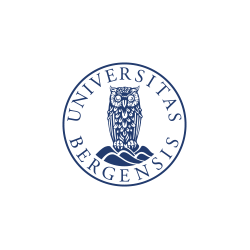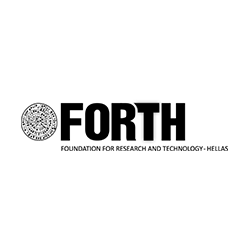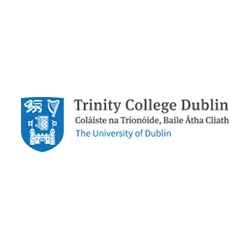
University of Bergen - Coordinator
The University of Bergen (UiB), Department of Physics, Nanophysics group. UiB was funded in 1946 and is the third largest University in Norway with 14500 students. The Department of Physics has 66 staff members of which are 33 scientific staff. The department educates annually about 45 master students and 15 Ph.D. students.

Forth
IESL-FORTH is one of the leading Greek research institutes in experimental physics. It covers a wide range of topics ranging from applied laser physics, over solid state theory and semiconductor physics to fundamental groups working both theoretically and experimentally on Quantum Mechanics. It contributes to nanoLace their expertise in material science (most notably in the analysis of surfaces) and in ultra-cold quantum gasses.

Irresistibe materials Ltd
Irresistible Materials (IM) is an SME that develops advanced materials that address the semiconductor industry’s need for ever-decreasing microchip feature sizes (next generation lithography).
Suasana Slot Malam Ini: Waktunya Bikin Spin Jadi Legend
Kalau lo lagi nyari vibe jackpot yang bener-bener bikin deg-degan https://www.nanolace.eu/news/upcoming-second-general-assembly-meeting/ malam ini kayaknya atmosfer slot lagi panas banget. Banyak orang ngejar momen maxwin, dan jujur aja, rasanya kaya layar HP udah berubah jadi mesin keberuntungan. Main slot malem-malem itu beda, bawaannya lebih seru, lebih hidup, dan bikin adrenalin naik terus.
Kenapa Main Malam Lebih Greget
Ada sesuatu yang beda pas buka game slot di tengah malam. Komunitas terasa rame, animasi lebih mulus, dan sensasinya bener-bener naik level. Berdasarkan tren, lebih dari 70 persen pemain ngaku lebih suka nge-spin di jam malam, karena atmosfernya lebih asik.
Bukan cuma soal cahaya layar yang nyala di kegelapan kamar, tapi lebih ke rasa penasaran https://www.nanolace.eu/news/third-general-assembly-meeting-virtual/ malam ini bisa jadi malam keberuntungan gue. Entah lo main modal receh atau modal besar, kesempatan buat nyantol jackpot itu selalu terbuka.
Modal Receh Hasilnya Bisa Wah
Siapa bilang harus punya banyak duit biar bisa main. Sekarang tren justru deposit kecil tapi peluang tetap gede. Banyak yang mulai cuma dari modal secangkir kopi tapi bisa diputerin jadi beberapa jam permainan.
Dari obrolan di forum, lebih dari 60 persen pemain sekarang suka mulai dari modal kecil. Tujuannya simpel coba dulu kalo hoki lanjut. Jadi main tetap fun, risiko kecil, tapi masih ada peluang buat spin yang pecah banget.
E Wallet dan QR Code Gak Pake Ribet
Zaman sekarang siapa sih yang mau ribet. Metode deposit favorit anak muda sekarang jelas e wallet sama QR code. Tinggal scan masukin minimal 5 ribu langsung bisa ngegas main tanpa banyak drama.
Data survei juga nunjukin kalau lebih dari 80 persen pemain slot di bawah umur 30 lebih suka pake e wallet. Alasannya simpel cepat aman dan gak bikin mood hancur gara-gara transfer lama.
Maxwin Mitos atau Fakta
Istilah maxwin sering banget muncul tapi apakah itu cuma gimmick. Jawabannya enggak
https://www.nanolace.eu/about/. Maxwin itu nyata dan banyak banget bukti screenshot yang di post di media sosial. Kadang cuma spin santai eh tiba-tiba saldo langsung meledak.
Angka juga bicara. Sekitar 15 persen pemain aktif berhasil dapet kemenangan besar minimal sekali tiap tiga bulan. Jadi bukan sekadar mitos tapi peluang nyata buat yang sabar dan konsisten.
Hype RTP Kenapa Semua Ngomongin Ini
RTP alias Return to Player sekarang jadi bahan obrolan paling panas. Intinya makin tinggi persentasenya makin besar peluang lo buat dapet balik modal. Slot kekinian udah punya RTP di atas 98 persen beda jauh sama dulu yang cuma mentok 90 persen.
Kalau lo bisa pinter milih game dengan RTP tinggi kesempatan menang jelas lebih kebuka. Analoginya sama kaya nyiapin strategi sebelum tanding futsal gak bisa asal main harus tahu medan.
Tips Komunitas yang Lagi Viral
Hal paling seru dari dunia slot hari ini tuh komunitasnya. Dari forum grup chat sampe konten TikTok banyak banget orang yang sharing pola trik sampe teori aneh aneh buat ngejar scatter.
Ada yang percaya jam tengah malam lebih gacor ada yang ngandelin spin pemanasan bahkan ada yang rajin catat pola kapan mesin bayar. Meski gak semua terbukti tapi serunya ngerasa jadi bagian dari komunitas bikin main makin rame.
Bonus Newbie yang Beneran Worth It
Gak bisa dipungkiri promo bonus jadi salah satu alasan orang betah main https://www.nanolace.eu/contact-us/. Lagi rame banget promo bonus 100 persen buat member baru dengan syarat turnover yang gak bikin kepala pusing.
Bayangin aja deposit kecil saldo langsung dobel. Rasanya kaya beli sneakers dapat dua pasang. Dan yang bikin makin asik syaratnya gak ribet cukup 7x atau 10x main udah bisa cair.
Jam Malam Waktunya Para Night Owl
Data nunjukin kalau 65 persen spin slot terjadi antara jam 9 malam sampai 2 pagi. Kayak udah jadi budaya main slot itu memang cocok buat kaum begadang. Lebih tenang gak banyak gangguan fokus juga lebih maksimal.
Selain itu ada sensasi eksklusif seakan-akan lo lagi masuk ke klub rahasia yang isinya orang-orang yang sama-sama ngejar kemenangan pas dunia lagi tidur.
Main Cerdas Jangan Lupa Batasan
Dengan semua hype gampang banget lupa sama realita. Aturan emasnya simpel anggap slot sebagai hiburan bukan sumber gaji bulanan. Sama kaya beli tiket konser tujuan utamanya adalah seru-seruan bukan balikin modal.
Kalau jackpot nyantol itu bonus. Kalau enggak lo tetap dapet https://www.nanolace.eu/publication/johannes-fiedler-presented-nanolace-material-at-eqtc2021/ pengalaman seru. Riset nunjukin kalau 75 persen pemain yang pasang limit main merasa lebih puas dibanding mereka yang ngejar terus tanpa batas.
Dunia Slot 2025 Tren yang Lagi Naik Daun
- Main singkat Banyak yang lebih suka sesi 10 sampai 15 menit bukan maraton
- Mobile first Lebih dari 85 persen pemain pake HP buat main
- Influencer hype Streamer TikTok dan Twitch bikin game cepat viral
- Deposit receh Tren deposit 5 ribuan masih jadi primadona
- Forum strategi Main rame rame lebih asik daripada solo grinding

MB Scientific AB
MB Scientific AB is a Swedish company produces a state-of-the-art photoelectron spectroscopy instruments & system. Our products and services are dedicated for the advanced research field in physics mainly ARPES (Angular Resolved Photoelectron Spectroscopy) research. Our stand alone ARPES system MBS A1SYS gives scientists an opportunity for world leading research. Mb Scientific has previously cooperated with UiB on the development of a neutral helium detector in the EU Nemi project. MB Scientific has also delivered an effusive metastable helium source to UiB for preliminary measurements.

NTNU
NTNU (Norwegian University of Science and Technology) is the largest university in Norway and it has currently more than 40 000 students and 8 000 employees. The main campus is in Trondheim and smaller campuses in Gjøvik and Ålesund. NTNU has the main national responsibility for education and research in natural science, engineering, and technology. In addition, the university also offers higher education and research in disciplines like medicine, psychology, social sciences, the arts, teacher education, architecture and fine art. The university has roots dating back to 1760.
NTNU (Norwegian University of Science and Technology) is the largest university in Norway and it has currently more than 40 000 students and 8 000 employees. The main campus is in Trondheim and smaller campuses in Gjøvik and Ålesund. NTNU has the main national responsibility for education and research in natural science, engineering, and technology. In addition, the university also offers higher education and research in disciplines like medicine, psychology, social sciences, the arts, teacher education, architecture and fine art. The university has roots dating back to 1760.
The Department of Physics has about 40 academic staff members and employs in total 160 people (as of Mar 2020). The central research areas of the department are materials science, nanoscience, surface physics, modern optics, astrophysics, solar energy, biophysics, and medical technology.
The prime role of NTNU in the project is to develop the theoretical framework for the solid mask calculations and to use it to propose mask structures that will be manufactured and tested experimentally by other project partners.
This work is demanding computationally and will, therefore, be performed at high performance computer facilities.

Trinity College Dublin
Trinity College Dublin is a partner in the NANOLACE collaboration through the Prof. Richard Hobbs’ research group at the School of Chemistry and the Centre for Research on Adaptive Nanostructures and Nanodevices (CRANN).

University of Birmingham
Founded in 1900, the University is one of the leading research-based universities in the United Kingdom; the breadth of research expertise is a distinctive characteristic of the University.
